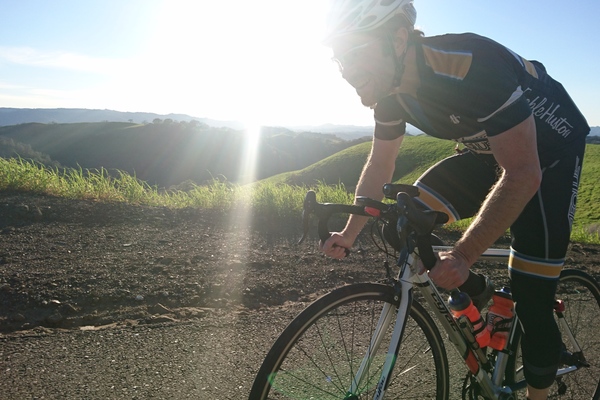
From time-to-time, everyone has problems getting motivated to train. This is normal. The secret is to figure out the root cause. Once you understand why, then you can move on to what you can do about it. Here are the common top 10 reasons for lack of motivation and what you can do to get back on track:
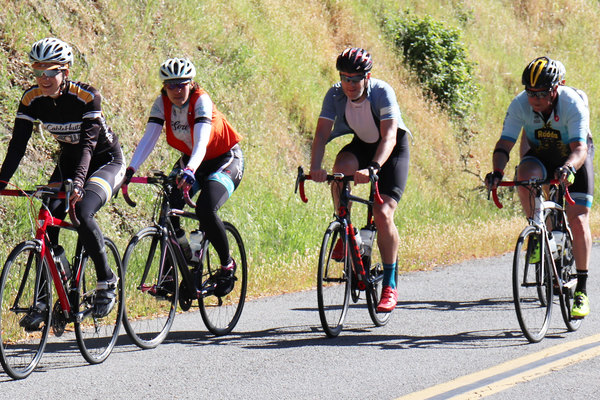
Many riders focus on the average speed or distance of their rides. Apps like RidewithGPS and Strava encourage this sort of riding and, although it can be fun, it’s usually not an effective way to train.
What’s more effective is sticking to your prescribed workout and training zones. This means that, although you may not go as far or as fast as you need to in order to PR on a certain segment, you’re getting more effective training over the long term. For example, simply hammering every time you ride will get you fit in short order, but before long you’ll plateau and eventually you’ll burn out. Hammering without rest also puts you at greater risk for injury. Resisting the temptation to hammer every ride can be difficult. Our bodies anticipate and crave the exercise endorphin rush. Hammering also doesn't require much planning or thought.
Balancing your easy, rest, tempo, and interval days in the ideal combination prescribed by VeloPro will get you fitness that peaks when you need it to and helps avoids burnout. VeloPro makes it easy by taking care of the planning for you. This methodology is proven by exercise science research and is how the pros train. It does requires a little discipline to hold yourself back and follow a plan. However, it works and we promise that you will still get your endorphin rush.
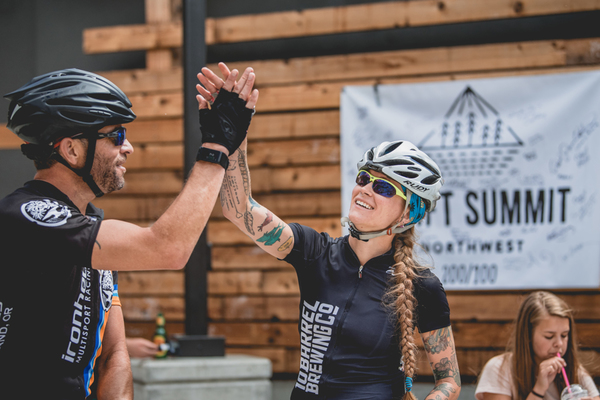
VeloPro is unique in that our training plans are organized around specific event goals. An event can any organized cycling experience. Riders use VeloPro to train for criterium races, stage races, time trials, cyclocross and non-competitive endurance rides like centuries, gran fondos and randonnees.
Why do we organize our training plans events? In the training business, this is called “goal specificity.” Train for what you want to do. Sounds simple right? If you are going to destination and you want to get there as quickly and efficiently possible, you use a map. A training plan is a map designed to get you to a fitness destination. Without a plan, you are just riding around. While this may be fun, it won’t help you be a better cyclist. Without a destination or “goal,” it is hard to chart improvement over time. For example, if you want to train for a hill-climb event, your training plan should include workouts that help make you a better climber. You should be able to track your progress as you train.
There is another benefit when training for an event. It allows VeloPro to structure or “periodize” your training with an end date in mind. Periodization breaks up the training into phases where we build your fitness while carefully balancing it with recovery and rest periods, so you avoid injury. This is all put on a calendar, so you arrive at your event in peak fitness, confident, and ready for maximum performance.
Perhaps the best benefit in training for an event is that it gives you something to look forward to. You Events are powerful motivators. You can visualize your success. Events are exciting and a great way to challenge yourself. Also, events support your local cycling community. Events give your supporters an opportunity to cheer for you. Best of all, completing an event that you’ve trained hard for is extremely satisfying.
*Photo credit: Harry Apelbaum Studios
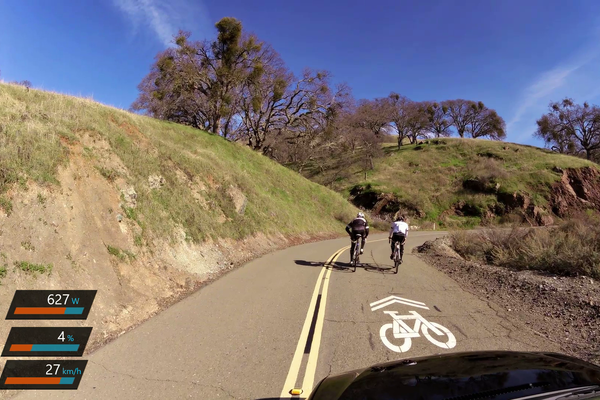
FTP is a tricky thing. Riders obsess over it. Coaches analyze it. Confidence and even self-worth can sometimes be dependent upon it. FTP, or Functional Threshold Power, is defined as a rider's maximum power output over a 60-minute period. Basically, it's a measure of your long-range aerobic fitness. Typically, FTP is derived by taking 3-5% off your best 20-minute power.
What's most vexing, however, is that this number fluctuates. Certainly, it changes from the regular season to the off season (at least it ought to), and it changes as you get more fit. More importantly, it changes depending on the day. Because FTP Checks are integrated into riders' training schedules, it's possible to be a bit tired going into them. It's also always possible to have a bad day. This happens all the time.
There are a few ways to deal with this. First, don't stress about it. Everyone has off days. Second, make sure the circumstances of your FTP test are always the same. Ride the same climb, or section of road. Do it at the same time of day, and in similar weather conditions, if that is possible. You can even eliminate all the outdoor variables and do your FTP tests on an indoor trainer. Just make everything as consistent as possible. Third, don't watch the numbers. It's easy to try to peg your current output to your target goal, but this can mess with your head and cause a worse result. Put your cycling computer on the map screen or something similar, do your best effort, and let the numbers fall where they may. Fourth, don't start too hard! This is a sure way to load your legs with lactate and scuttle your chances of doing a good ride. Get a good warm up, think of it as a 20-minute time trial, ease into the effort, and push to the maximum as you're ready.
Keep in mind that FTP can vary and just because it doesn't rise significantly compared to your last check doesn't mean you're less fit. You could have had an off day, or you could be a bit tired. Let it be what it is, stick to your training plan, focus on the future, and it's likely your next check will be much better.
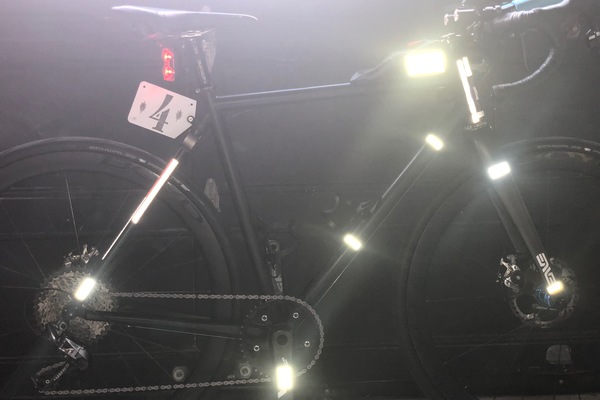
We’ve all seen the increasing incidents of cyclists being injured and killed by motorists. This is a global phenomenon as distracted driving and poor cycling infrastructure persist. In fact, a recent study out of Australia shows that drivers don’t consider cyclists fully human! It is vital that you protect yourself while on your training rides. If this is something that’s has you worried, here are a few quick tips.
***Thanks to Dave Anolik for this photo of his blinged out bike!***
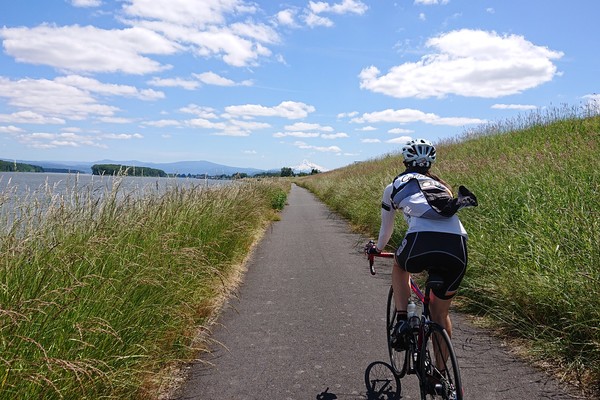
When most people think of athletic training, a movie montage speeds through their minds. An athlete drinks a dozen raw eggs, lifts logs and hurls giant rocks, sprints up and down a stadium staircase and other cliches--ad nauseum. Months of training is portrayed as 30 sweaty seconds before the hero goes on to crush the competition and raise their hands in glorious triumph. Training is treated as an unpleasant stop on the way to greatness. Training equals suffering.
The truth is that training is 95% of any athlete’s life. It’s not a side show. It is the show. Good training is not suffering. Can you imagine if 95% of your life is suffering?! Good training is simply the purposeful and structured way to work toward a meaningful goal. If you are not motivated to train, I’d suggest you haven’t found your "meaningful" goal. That’s the beauty, you get to decide what is meaningful. There are as many reasons to train as there are people. Training is where you see growth and improvement on a day-to-day basis. Training is the opportunity to have a small victory and get dose of that "meaning" with every workout. It is exciting and fulfilling and something to look forward to every day.
The truth is that training is the ultimate self-care.
Athletic training, including cycling training gives you an endorphin buzz that fights depression, enlivens the mind, builds your confidence, and reduces stress. Training helps you power positively through all of your life challenges. Why train? The real question is why aren’t you training?
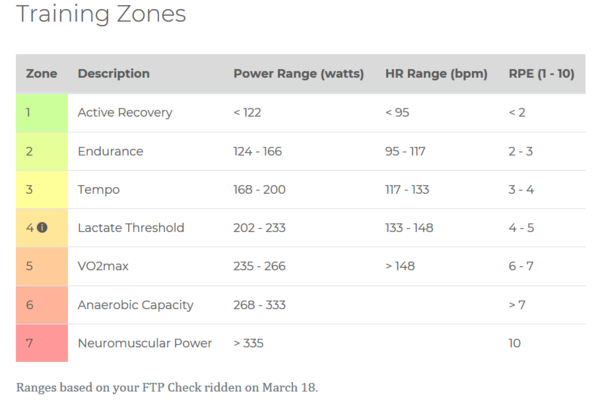
Making the transition from just riding around to riding with purpose can be overwhelming. If you are just starting to train, you will be flooded with unique jargon and acronyms. Check out these helpful definitions.
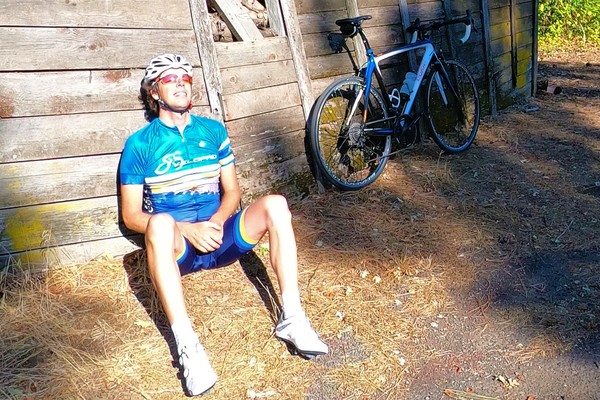
Recovery time is critical for improving cycling fitness. Endless hammering without proper recovery is a guaranteed ticket to injury, illness or the dreaded “Overtraining Syndrome.” VeloPro uses the latest training science to formulate structured training plans to help you establish your base fitness, build improvements, and then peak for your event. To do this, VeloPro builds training workouts of varying length and intensity into your plan to help balance growth and recovery.
While the VeloPro AI is smart and learns about you with every ride, it is not omniscient. VeloPro’s insights are limited to your cycling performance. VeloPro doesn’t know if you are ill, injured, working 12-hour days or experiencing additional physical and mental stress in your daily life. These factors can add greatly to your need for additional recovery time. Every rider is different and must proactively monitor and manage their recovery needs. To help, VeloPro makes it easy to mark time off for any reason. VeloPro doesn’t judge! We’re here for you. VeloPro does requires that you know you need time off. It is essential that you learn how your body responds normally to the training doses in your workouts. Sometimes in our “no excuses” driven society this can be hard to figure out. Here are 15 signs to help you recognize when you need more recovery time.
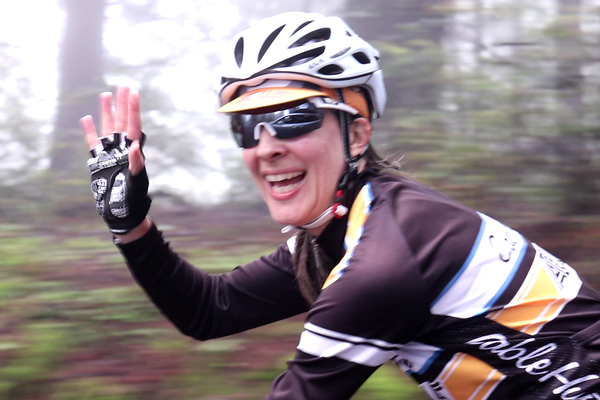
A quick glance at any pro peloton will show you that all options are on the table. There are plenty of great reasons to wear cycling gloves, but ultimately it is a personal choice. We here at VeloPro err on the side of wearing gloves. Here are our top eight reasons:
Here’s our recommendations. Wear full gloves on cold, wet days. Wear fingerless gloves whenever it is warm enough. Don't wear gloves only when riding indoors or on low-speed outdoor rides where you are less likely to fall.

Sleep is the single best way to recover from training. In fact, top athletes are infamous for sleeping 10 hours a day and routinely incorporate napping into their training routines. Since most of us can’t spend that much time in bed or even nap after training, it pays to know how much sleep you need to get each night. The ideal amount of sleep for a person depends upon several factors - their natural sleep needs and rhythms, their exercise-related fatigue level, and their life stress level. Most people do best with between 7 and 9 hours of sleep each night. The key is to get enough sleep to achieve 1.5 to 2 hours of “deep sleep.” Deep sleep is when the body releases the growth hormones that are key to recovery. You can estimate that deep sleep will be 20% of your natural sleep cycle.
The bad news is that we live in a sleep deprived world. So, how do you get that ideal amount of sleep? There is no magic solution that works for everyone, but here are a few well known sleep hygiene practices. Try to stick to a consistent bedtime and bedtime regime. Habit is critical for getting to sleep and staying asleep. Avoid caffeine after 5:00 PM. Avoid excessive amounts of alcohol. You may think alcohol helps you get to sleep, but too much impairs natural sleep cycles. Avoid screens at least 30 minutes before bedtime (60 minutes is ideal). The blue light emitted by cell phones, computers, tablets, and TVs inhibits the production of the hormone melatonin. Melatonin controls the circadian rhythm and sleep-wake cycles. Reducing melatonin makes it harder to fall and stay asleep. Learn the optimum amount of sleep for you and set a nightly sleep goal. Shoot for that and you’ll be more likely to get the most out of your training. Studies show that well rested athletes recover faster and perform better.
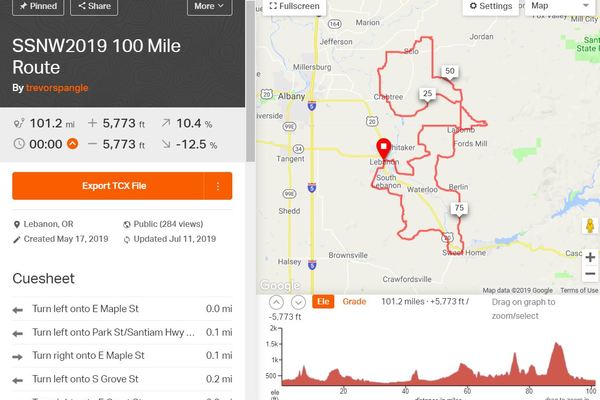
Knowing the basics of your event course will help you to avoid surprises on the day. While it’s not necessary to know every curve and climb, knowing the character of the course and where the major obstacles are will help you plan your day. For example, if the ride has one major climb that takes place in the first quarter of the event, you know that you will need to conserve a bit on that climb in order to have enough energy to complete the rest of the course. Check the course profile and the character of the roads. Are they straight, or twisty? Rough or smooth? Narrow or wide? Are the climbs steep or shallow? Which way does the prevailing wind typically come from? If the event has checkpoints or rest stops, where are they? Knowing the answers to these questions can help you plan your ride strategy and make your day as smooth as possible. If the event stakes are high, it is highly advisable to ride tricky segments of the course in advance. There's no substitute for experience. Most events provide GPS route guidance that you can review on your computer and use on your cycling computer. We love Ride with GPS for previewing the course. You can select from a variety of map types and even see the course from a "Street View" perspective.

Not too long! The longer you stand or sit at an aid station, the more you give your muscles the signal that “we’re done!” and the harder it is to get them going again. Try not to stick around for more than 5 minutes. Fill your bottles, eat some food, restock your jersey pockets, use the restroom if you need to, and be on your way! At larger events there can be some competition for resources. Plan for this. It is always a wize choice to be more self-sufficient. Be as strategic as possible when making choices at the aide station. How long are the lines for food, restroom, or the bike mechanic? Also, it is always tempting to socialize with other cyclists. It is part of the fun. However, if you're not careful you could find yourself leaving 20-30 minutes later, making for a much longer day than you expected! It is much better to socialize at the finish line.>
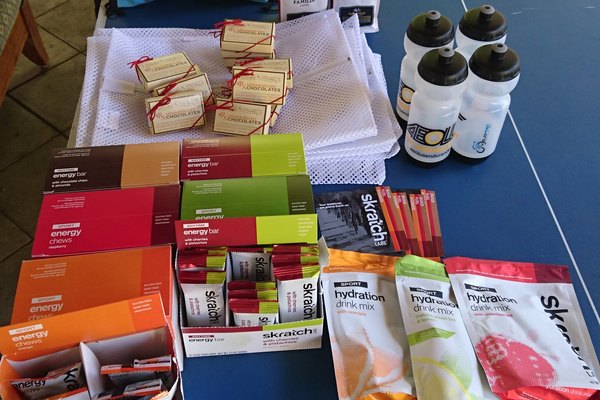
When you’re planning a hydration and nutrition strategy for riding 100 miles, don’t think of it in terms of the distance, but rather in terms of the hours you’ll spend on the bike. So, if you’re able to do it in 5 hours, you’ll need to eat and drink a bit differently than if you plan to take 10 hours. In either case, it can be disastrous to get behind. Forgetting to eat and drink regularly will often lead to the dreaded "bonk" and for a very unpleasant day.
Long distance rides are often called "eating contests on a bike." The rule is to always “eat before you are hungry, and drink before you get thirsty.” You don’t need to treat your jersey pocket food stores like an all-you-can-eat buffet, but we do recommend you eat 90-250 calories every 40-60 minutes. Only consume food and drink that you know your stomach can handle. An event ride is the wrong time to experiment with a new energy gel or hydration product. The consequences of ignoring this advice can be quite embarrassing and smelly. Eat real food instead of highly processed gimmick products whenever possible.
You should drink 1 bottle of water and or hydration drink each hour. If the weather is hot, you’ll need to drink even more. Water is super important, but you will also need to replace your electrolytes (salt and potassium). We prefer OSMO or Scratch Labs hydration products. Avoid sugary drinks like Gatorade that can sour the stomach. In very hot and sweaty circumstances, you may need salt tabs to help prevent or stop leg cramps. Some people claim that the salt and more importantly the vinegar in pickles and pickle juice can also help.
A few more quick tips. Don't overeat at the dinner and breakfast before a big ride. It doesn't help and can leave you feeling sluggish. The carbo-loading strategy of twenty years ago is no longer best practice. Make sure to work on being hydrated at least 48 hours in advance of your ride. However, avoid heavily pre-hydrating the night before your event. This can leave you urgently needing to pee multiple times during the big event. If you need to pee, wait until a rest stop or find a private spot, stop, and do it. Despite the heroic and humorous tales, we don't recommend you wee in the saddle or attempt to pizzle off the side of your bike. Uric acid can ulcerate the skin and cause an unpleasant rash. Also, crashing with your "gear" out makes for a permanent social media bonanza. Finally, judiciously use caffeine. There's nothing wrong with a cup of coffee before an event. A quick hit of caffeine toward the end of a ride can give you a nice boost. However, overusing caffeine can hard on the stomach, inspire an emergency bathroom visit, and be dehydrating.
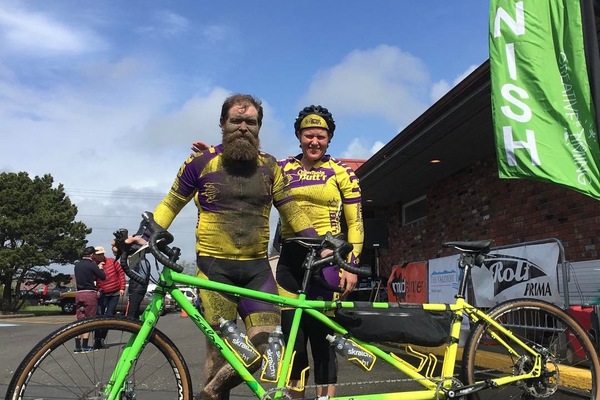
They say that sharing a tandem either drives people apart or makes them best friends. That may or may not be true, but one thing is for certain - a tandem has two engines, and the closer they are in terms of power, communication, and weight, the better (and faster) the ride will be.
So, how does one train for an event on a tandem?
The short answer is: very similarly to the way one trains for solo events. VeloPro plans always work with your schedule and ability, so the training workouts you get will be optimal. What VeloPro doesn’t do is give you practice riding and handling a tandem bike or experience working with a partner. Communicating with your partner is the really important part. Your efforts need to be in sync. Shifting, cadence, braking, and steering all require communication. It doesn’t help to be in top shape if you’re constantly missing shifts or grinding gears because the stoker (rear rider) has no idea what the captain’s (front rider) plans are. So, while it’s important to have good fitness, it’s just as important for both riders to learn to trust each other by working as a team and communicating efficiently.
Big thanks to Trevor Spangle and Jamie Lusk, tandem partners who provided this photo and used VeloPro to train for Dirty Kanza!
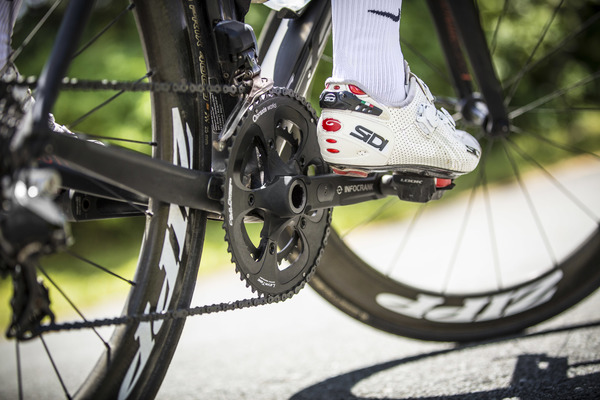
How fast your pedal is called cadence. Most people, if left to their own devices, will pedal at a cadence around 70 or 80 rpm. This is fine if your riding mainly consists of mid-level to low efforts on flat roads. However, if you’re competing, or even just doing regular group rides, it pays to be able to pedal smoothly at higher RPM. That’s because when you need to make accelerations like getting onto a wheel in the paceline, following someone’s attack or keeping up with the pack on a hill climb--doing so from a high gear is inefficient and slow.
Think of it this way. There are two ways to go faster, pedal a bigger gear using more muscle or pedal an easier gear at a higher RPM. Both approaches will increase your power, but a higher cadence in a lower gear is less likely to tire out your legs. This is a technique that Tour de France winner Chris Froome uses to tackle racing’s toughest climbs. It is the same way as when driving a car. In order to make a pass on the highway, it’s faster to downshift (causing the engine to run at higher RPM) and go past than it is to leave the car in a high gear and lumber on by.
The good news is that pedaling at a higher RPM is a learned skill. You can train to increase your cadence. A good rule of thumb is this: when warming up and cooling down during your workouts, try to maintain a cadence of 90-100 RPM in a lower gear. For the rest of your workout, just do what feels natural. You will find many opportunities to use a higher cadence to improve your speed and efficiency.
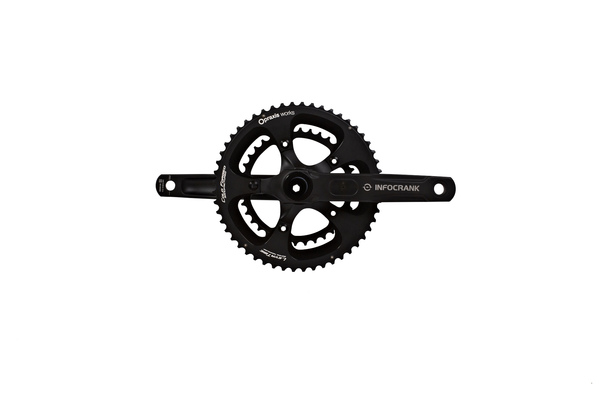
If you have a dual-sided power meter (we highly recommend InfoCrank) you’ll no doubt be paying attention to your pedal balance. This is the proportion of power that you derive from each of your legs. While some folks pedal with nearly 50/50 balance, most folks are off by a few percent one way or the other. It’s also quite common to pedal one way in Easy and Endurance zones, and differently in zones that require more force and different muscle recruitment patterns. For example, a rider may pedal with a 47/53 balance while just riding along, but levels out at 50/50 when hammering. If your pedal balance is more than 5% off, it is worth exploring why that is. Factors like bike fit, injury compensation (or the legacy thereof), and core stability all could play a role. For smooth pedaling, you want to be as close to 50/50 as possible.
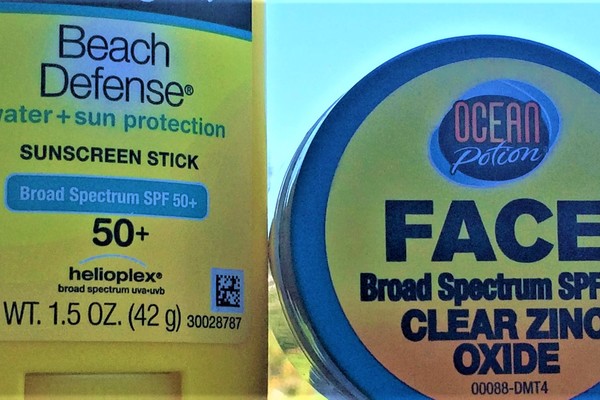
Sunscreen doesn’t actually make you faster, but it can save your life. The benefits of using a broad spectrum sunscreen to protect one’s skin from developing UV-related cancers is well known. Also, who wants to look like a fossilized raisin? For good protection, make sure to choose a sunscreen with at least 30 SPF, though most dermatologists recommend 50 SPF for safety. Apply liberally and take some with you to reapply if your event is longer than a two hours. Here's some more lotion for thought. There is evidence that sunscreen lowers body temperature and, since heat is an endurance athlete’s biggest enemy, maybe using sunscreen can make you faster!

One of cycling's most famous riders from the 1980's, Sean Kelly, notably never wore sunglasses. However, today’s glasses technology means that cycling glasses do more than protect your eyes from harmful UV radiation. They do that, but they also protect your eyes, help you see (many are available with Rx), protect your from insects, rain, road debris kicked up by cars or other riders, and potential injury in the event of a crash. Along with your helmet, they are part of your cycling safety kit, so don’t leave home without them!
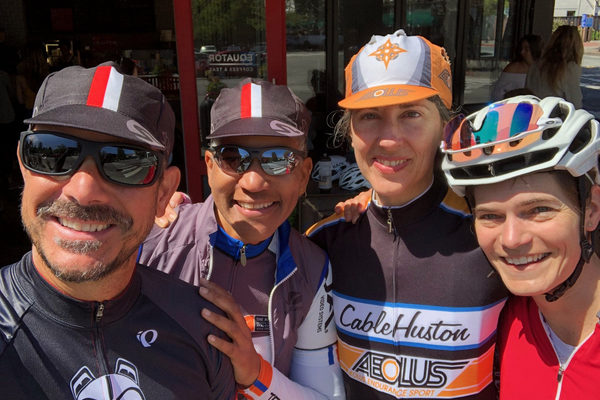
Cyclists have a hard time with fashion and cycling caps came along to help with that. Cycling caps, or the ‘casquette’ in French, make a fashion statement and are instantly identifiable to cycling culture. More than that, though, they help shade riders’ eyes from the sun, soak up sweat, keep riders’ heads warm on cold days, and, perhaps most usefully, keep rain and wheel spray out of riders’ eyes on wet days. The short brim of the cycling cap isn’t designed to make you look stupid, but so that you can see the road ahead while in an aero position. Cycling cap are also made of lightweight fabrics so they fit comfortably beneath a helmet. What do you know? The tried-and-true cycling cap is more than a fashion accessory after all!
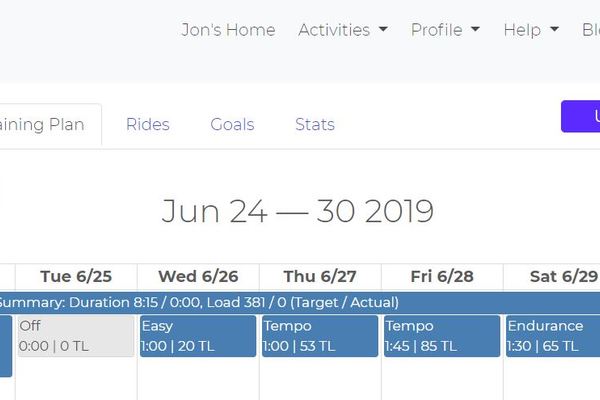
Structured training is the opposite of just riding around and doing what you like. While that’s a good way to stay generally fit, it’s an inefficient way to get the most out of your training time and to be at your best for events that you plan to do. Structured training takes into account the cycles of building your fitness and then resting. Structured training also keeps track of where you are at any given moment in your overall conditioning journey, so you get the right training prescription at the right time.
One way to think of it is as a “dose and response” model. For each training “dose” there is a given training “response” as your body adapts. If you do a lot of training dosing, and don’t rest enough, it’s tough for your body to fully adapt to the load. Structured training schedules your training loads and rest periods such that you get the most training response for work you do. It sounds simple, but it is the secret to training smarter and avoiding performance plateaus. Athletes who embrace structured training often show remarkable improvement and are shocked with the results! VeloPro is a great way to give structured training a try.